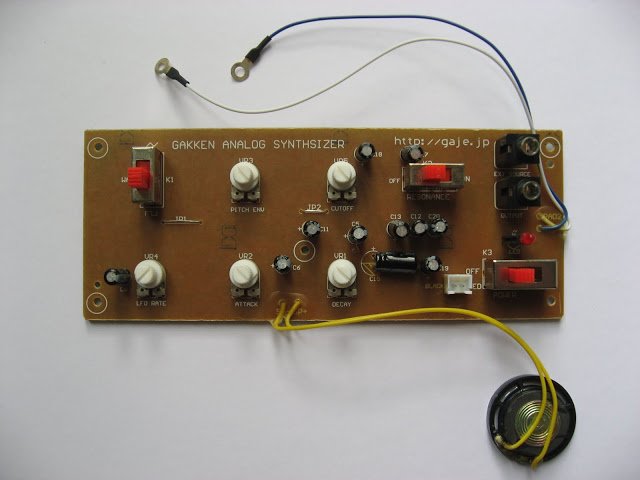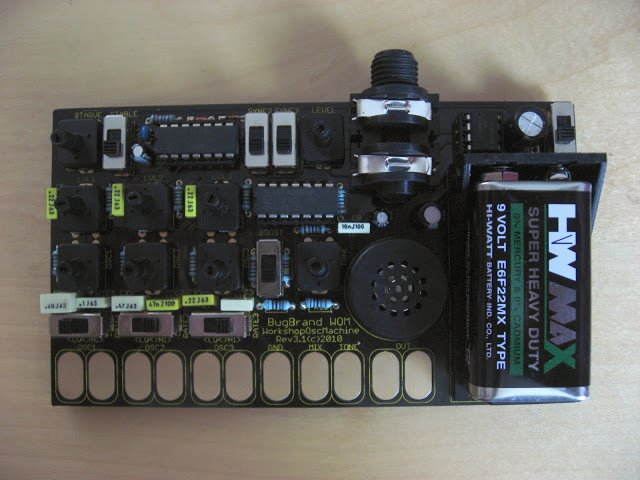My Meeblip DIY kit is now built and making noise!
The hardware of the Meeblip is perhaps about as simple as a digital synth could possibly be: a microcontroller (with a good number of switches and knobs connected it), a MIDI interface to get notes in, a digital-to-analog convertor, and just enough audio circuitry to get sounds out. All the subtractive synthesis is done in the microcontroller, so it sounds like a simple soft-synth plugin. Except of course it lives in its own hardware, where the audio output circuit seems to add a bit of pleasing grunge to the sound.
Reflex Audio/CDM are steadily developing new versions of the Meeblip. The circuit board of this one is revision 1.31 SE which has some changes to previous versions: it’s now red, has a power switch, there is no USB power, and the connectors are mounted on the bottom to make positioning a front panel easier. There’s no case with the DIY kit (the quick build kit has a case), although there’s the option of the new SE case becoming available at the end of August, or even a home brew case…
The build instructions are easy to follow, although they are yet to be fully updated for the 1.31 SE board. So if you have a go at building this revision, one gotcha is that in order to check the power (step 3), all the power supply components need to be soldered in first, including the power diode, regulator and new power switch. One other thing to note is that the Meeblip needs a good low-noise external power supply, otherwise it can get some hum on the audio.












